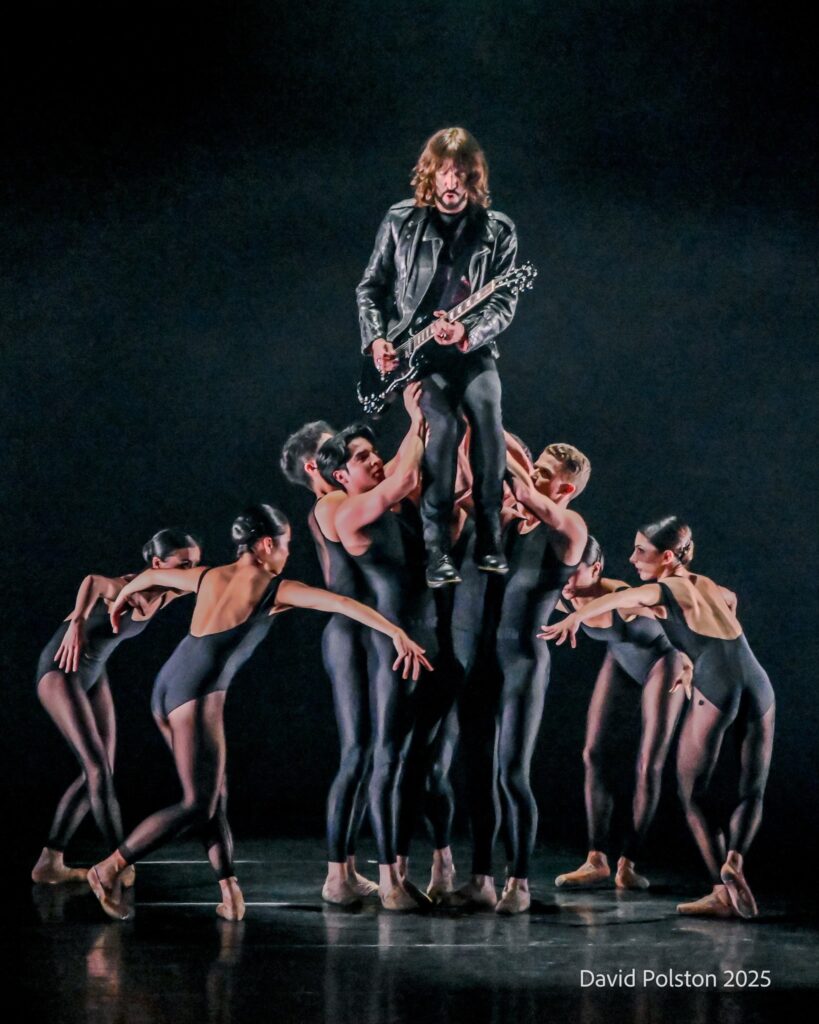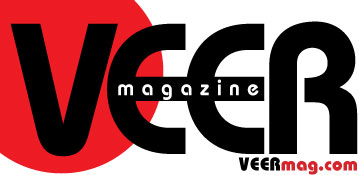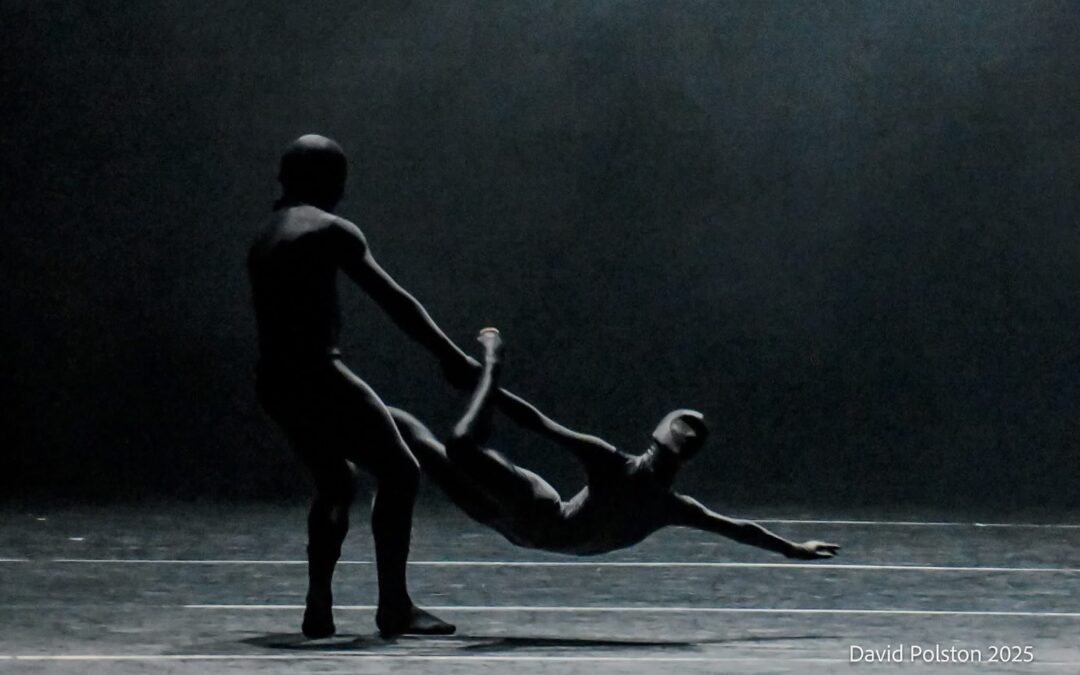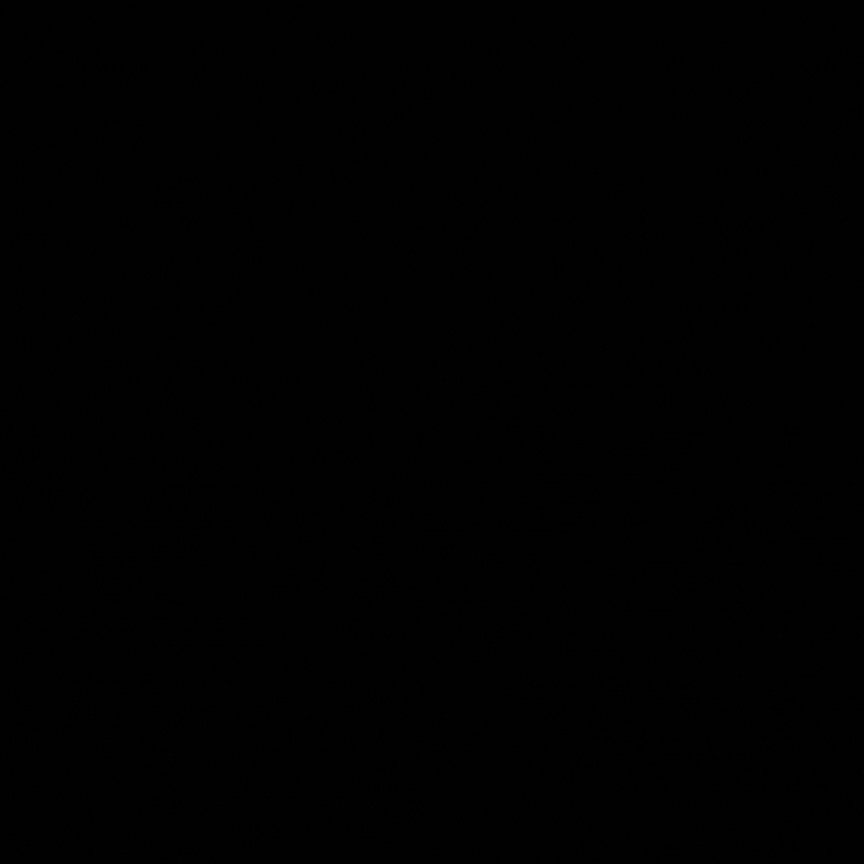(Now, in darkness, world stops turning…Hand of God has struck the hour. Photo by David Polston)
Review by Jeff Maisey
Photos by David Polston
Fucking brilliant!
These are words I spoke from the heart as the blood red curtain closed at the end of Act I of the American debut of Birmingham Royal Ballet’s riveting production of “Black Sabbath — The Ballet” Friday, May 30 at Chrysler Hall in Norfolk.
“Fucking,” after all, is often cited as Black Sabbath singer Ozzy Osbourne’s “favorite” expressive word, and appropriate in describing the daring, cutting-edge qualities of the ballet’s opening segment.
Act I of “Black Sabbath — The Ballet” is arguably the finest, most gripping and relevant work of performance art ever presented.
The Ballet summoned the early doom and gloom works of Black Sabbath: “War Pigs,” “Iron Man,” Paranoid,” “Sabbath Bloody Sabbath,” and the self-titled song from their 1970 debut album — the epitome of heavy metal.
The opening lines of “War Pigs” set the dark, industrial mood, and dramatically escalated and maintained intensity. Heavy percussion, the unmistakable voice of Ozzy, clever symphonic arrangements, mystical visuals enhanced by hazers and dry ice, and stark spotlights set the mood and emotion as a pair of lovers connected in an eternal kiss shapeshifting in ever-changing, fluid formation in captivating motion before becoming mesmerized by The Guitar Spirit, played by animated Marc Hayward.
The cliché saying art is in the eye of the beholder is often used in reference to visual art, but it also applies to performing arts and based on the viewer/listener’s life’s experiences and interpretation.
To me the starkness portrayed in Act I conjured memories of the dire heaviness and mortal coil experienced upon entering the Imperial War Museum North in Manchester England. Images of the bleak, dystopian film “Children of Men” and the 1984 TV commercial introducing the Apple Macintosh computer simultaneously flashed from the memory bank.
As Ozzy’s recorded voice projected the lyrics of “War Pigs” with the audience singing along — “Generals gathered in their masses/ just like witches at black masses/evil minds that plot destruction/sorcerer of death’s construction/in the fields, the bodies burning/as the war machine keeps turning” — the poignancy of the moment was not lost in a climate where modern warfare, with its use of AI munitions, drones and robots, and reemerging discussion of nuclear weaponry, continues to rage in Ukraine. This juxtaposed with high-ranking members of the United Kingdom’s military stationed in Norfolk at NATO’s Allied Command Transformation Headquarters in attendance.
The dark, heaviness of Black Sabbath’s down-tuned music was mirrored by dancers mysteriously clad in black spandex and shrouded faces, seeming threatening the hopefulness and peace portrayed by the dancing lovers in perpetual bliss. Superb work by choreographer Raul Reinoso.
As Act I concluded, the audience seemed both stunned and euphoric having experienced a performance that stretched the boundaries of ballet and integrated modern, cutting-edge contemporary dance, all the while spellbound by the charisma and showmanship of Hayward, strapped with a signature Tommy Iommi preferred Gibson SG guitar and dazzling the audience with his guitar solos and power chords.

Marc Hayward’s role was the connecting portal for those curious about ballet, but in attendance as longtime, diehard Black Sabbath fans. Though not a trained dancer, Hayward at times glided across the stage like a feather moved by a gust of wind; he engaged the audience with hand motions and encouraging shouts. The audience repeatedly responded with great enthusiasm as evidenced in their roars of approval.
Ballet and hard rock music may seem like the oddest of bedfellows, but in the case “Black Sabbath — The Ballet” the joint venture in conjunction with the band’s “Back To The Beginning” farewell concert, slated for July 5, 2025 at Villa Park in Birmingham, and the mutual connection to the northern England industrial city, made for a match made in…well, heaven and hell.
For the Birmingham dance company, the Sabbath work is a masterstroke. While crossover appeal is common in the music industry with symphony orchestras performing the classic hits of Led Zeppelin, Pink Floyd, and Whitney Houston, ballet companies known for their lavish productions of “Swan Lake,” “The Nutcracker,” “Sleeping Beauty,” and “Don Quixote,” have been challenged to reach a broader audience. “Black Sabbath — The Ballet” is therefore revolutionary in its approach.
Each of the three acts featured different composers, orchestrators, arrangers, and choreographers. The acts — titled “Heavy Metal Ballet,” “The Band, and “Everybody Is a Fan” — are unique, yet showcase a common thread — the music of Black Sabbath.
Act II was much lighter in mood and focused on the telling the rock band’s history. Audio clips of each band member — Ozzy, Iommi, Geezer Butler, and Bill Ward — along with Sharon Osbourne told of the band’s formation, an accident where Iommi lost his fingertips and replaced them with rubber tips, and the legacy of the group. This with classical arrangements of the band’s music was played by the Virginia Symphony Orchestra in the pit with enhanced electric power of a rock band featuring local musicians Powell Randolph (drums) and Dan Clemens (bass).
Visually, six neon-like narrow horizontal bars of light illuminated the stage. I interpreted the lights as representing the six strings of a guitar.
The dance component of Act II, choreographed by Cassi Abranches, featured the large, international cast in more modern street clothes, expressing in flawless physical motion the essence of the youthful 1970s.
The audience was wowed when the curtain rose for Act III. A knee-high fog hovered across the stage where in the rear appeared a silver 1970s-era car turned upside down as if in an accident. Perched atop the vehicle was a menacing looking winged demon.
The dancers repositioned the gaudy stage prop to create movement. The dancers in this act, choreographed by Pontus Lidberg, were in celebratory motion, bringing a sense of joy and celebration. At one segment, dancers wheeled out wide tire-like props resembling vinyl records, and playfully interacted with the props. This final act of the performance was highlighted with the many classic ballet moves and positions and the triumphant return of Guitar Spirit.
The uplifting conclusion featured the entire cast of dancers, the Guitar Spirit front and center, and an electrifying wall of orange lights in the background.
Presenting “Black Sabbath — The Ballet” in its American debut was quite a coup for the Norfolk-based Virginia Arts Festival. The opportunity really is the result of a longstanding relationship with Birmingham Royal Ballet — and scheduling.
Next up for the ballet, a 6-night stand at the Kennedy Center in Washington, DC and then on to mainland Europe.
At a reception following the Norfolk opening, I was told a plan is in the works to take “Black Sabbath — The Ballet” on the road for a Broadway-like tour to markets far and wide.
For an encore, I suggested “Sex Pistols — The Ballet” to the technical director of Birmingham Royal Ballet. Imagine the costumes and stage props.
He didn’t dismiss such an idea.
Gotta love where this ballet company is heading.




